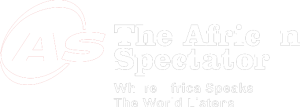KEY POINTS
-
South Africa’s inflation rose slightly to 3.0% in June, staying within the central bank’s target range and prompting speculation of further rate cuts.
-
Analysts argue that the current high real interest rate, paired with weak economic growth, justifies additional monetary easing.
-
The South African Reserve Bank will announce its next rate decision on July 31, amid looming trade challenges and declining inflation expectations.
South Africa’s annual inflation rate rose slightly in June to 3.0%, up from 2.8% in May, aligning with economists’ expectations and remaining at the lower boundary of the South African Reserve Bank’s (SARB) 3%-6% target range.
Despite the uptick, analysts believe the modest increase leaves room for further easing of monetary policy, especially amid a fragile domestic economy.
The latest data released by Statistics South Africa indicates that the uptick in inflation was driven largely by increased prices for food, non-alcoholic beverages, rentals, and utilities. However, the ongoing decline in fuel prices — now down for the fourth consecutive month — helped to cushion the broader inflationary impact.
“Annual inflation for food and non-alcoholic beverages reached a 15-month high, underscoring the pressure on household budgets,” said a spokesperson for the statistics agency.
Analysts cite weak economy and high real interest rate as justification for potential rate easing by year-end
Annabel Bishop, Chief Economist at Investec, noted in a research note that despite the slight rise in inflation, South Africa’s real interest rate — the difference between the repo rate and inflation — remains unusually high. “We expect at least one further 25 basis point cut in the repo rate this year,” she wrote, pointing to the current benchmark rate of 7.25% as a drag on economic recovery.
Since August 2024, the SARB has lowered the repo rate at four out of its last five monetary policy meetings, encouraged by inflation consistently tracking below its midpoint target of 4.5%. Yet, the central bank has maintained a cautious tone, expressing preference for a more conservative inflation band and signaling hesitancy to act too aggressively.
The SARB’s next policy announcement, due on July 31, will be closely watched by investors and economists alike. It comes just one day before former U.S. President Donald Trump’s 30% tariff on South African exports is scheduled to take effect — a geopolitical development that could further strain South Africa’s trade balance and currency stability.
David Omojomolo, economist at Capital Economics, highlighted the urgency of monetary support given the country’s persistent economic struggles. “South Africa’s weak growth outlook and subdued inflation suggest that more rate cuts are not only feasible but necessary to boost domestic demand,” he said.
Further supporting the case for rate cuts, a recent SARB survey showed that inflation expectations have declined among key stakeholders, including business leaders, analysts, and trade unions.
South Africa, grappling with sluggish GDP growth, high unemployment, and erratic electricity supply, could benefit significantly from a looser monetary stance. While inflationary risks remain, particularly due to global commodity volatility and domestic currency weakness, the current trend offers policymakers a narrow window to stimulate economic momentum.
In the first half of 2025, inflation has remained well below the bank’s midpoint target, bolstering arguments for policy flexibility. Nevertheless, some economists caution that any rate easing must be measured to avoid destabilizing capital inflows and the rand, which remains sensitive to global investor sentiment.
As the July 31 policy date nears, all eyes remain on SARB Governor Lesetja Kganyago, whose balancing act between curbing inflation and reviving growth will define the bank’s trajectory for the rest of the year.


